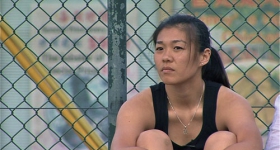The story is familiar: Asian American high schoolers toil away night and day, shuttled between school in the daytime, cram schools at night and a multitude of extracurricular sports, music and art classes in between. Tack on a few leadership roles and a volunteer stint or two, and long before they’ve ever taken their first college course or sauntered into their first internship interview, these kids already have overflowing resumes.
Talk about model minority myths. The idea that all Asian Americans follow this (very impressive, albeit exhausting) regimen and mold is not only a generalization, but also the subject of numerous recent studies on higher education. The Boston Globe published a piece just last month about how and why Asian Americans are facing “serious discrimination” in the college admissions process. In other words, lumping the community together under an umbrella stereotype has led to reverse discrimination of high-achieving Asian Americans.
Author Kara Miller, who worked as a reader for Yale’s Office of Undergraduate Admissions, noted that Asian Americans as a whole “tended to get excellent scores, take advantage of AP offerings, and shine in extracurricular activities.” In addition, “they also had hard-knock stories: families that had immigrated to America under difficult circumstances, parents working as kitchen assistants and store clerks, and households in which no English was spoken.”
Based on this assumption, lots of college hopefuls are taking a blow, their “accomplishments diminished” because people whom they’ve never met are working hard too. Though in many ways it may appear that Asian American applicants are getting the short end of the deal by being a part of a much-stereotyped, model-minority demographic, with universities capping Asian American populations at between 15 and 20 percent at Ivy Leagues, the alternative has proven tricky. Lifting that limit has its downsides too.
And that, perhaps, is the more important take-away point of the piece.
According to The Globe, in California, where Asian Americans make up about 40 percent of all public university students, “some Asian-American students feel that they lost something by going to school at a place where almost half of their classmates look like themselves -- a campus like UCLA. The students said they didn’t feel as well prepared in intercultural skills for the real world.”
So the chicken-and-egg question is this: Do we create these problems for ourselves by embracing community (just typing those words seems odd), or are the imposed assumptions about our ethnicity causing Asian Americans to become more tight-knit? Either way, the problem is clear: you’re damned if you do and damned if you don’t -- experiencing college in the midst of too many or not enough Asian Americans both seem to be collegiate handicaps.
Goldilocks would have a hard time figuring this one out too: What’s “just right”?









Comments